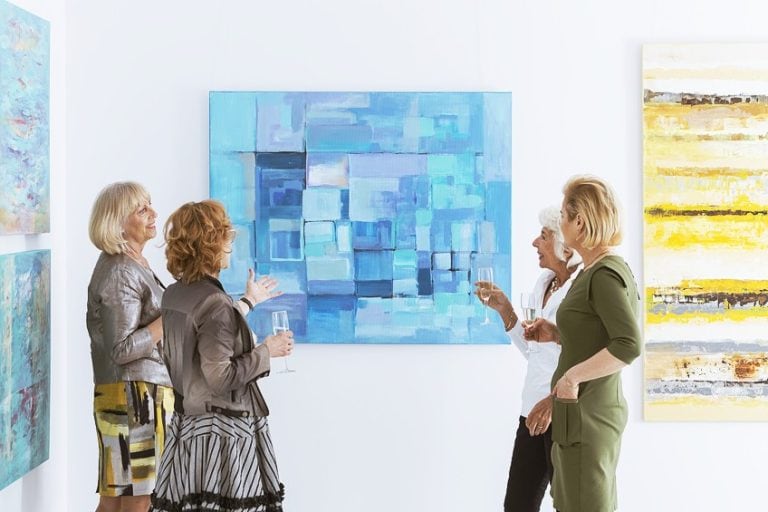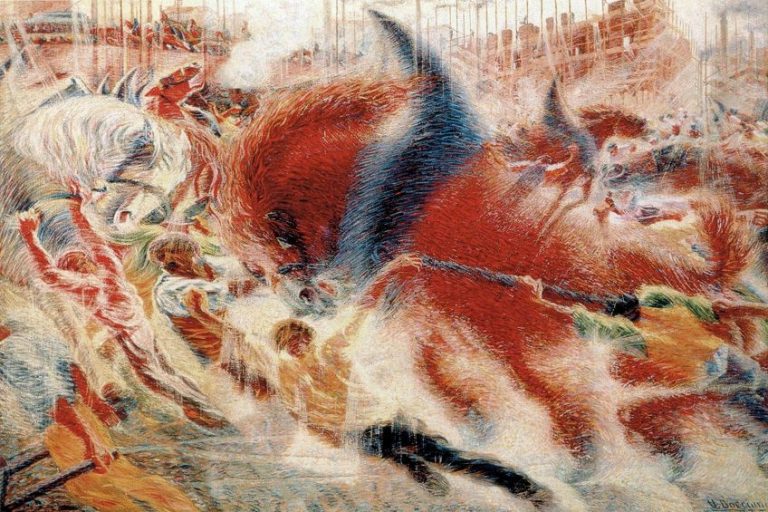Islamic Art – A Deep Dive into the Gilded World of Islamic Art
Islamic art is the term used to describe the broader art forms that occurred in Islam after the 7th century CE. It was not restricted to only Muslim artists making religious artworks, but all art forms and non-Muslim artists under this designating term. This article will explore Islam art, its characteristics, as well as some of the common art forms from this extensive artistic and cultural period in the Islamic world.
Table of Contents
What Is Islamic Art?
Islamic art and architecture tend to be characterized by the shared commonality that is the Islamic religion. The veneration of the Islamic religion and its traditions underpin almost all of Islam art with the primary holy text, the Qur’an, serving as a guidepost for Muslim artists. With over 2 billion adherents of Islam worldwide, this style of art is one of the most prevalent. So, with that in mind, when we look at Islam art, we can understand what drove and inspired Muslim artists to create their works.
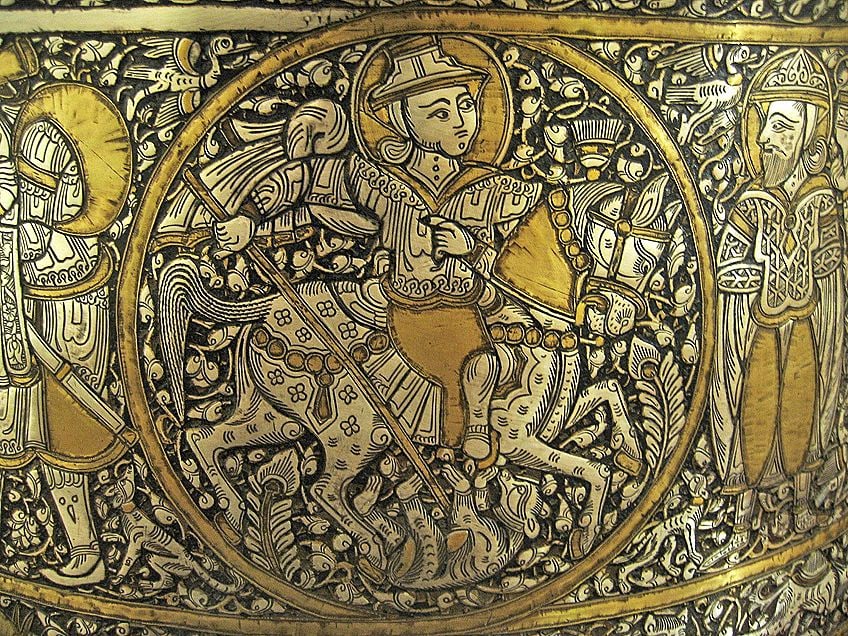
Introducing Islam: A Chronological Overview
It was only during the 19th century CE when the “umbrella” term, Islamic art, was used to describe the cultural material from the vast regions of Islam, spanning almost 1400 years. Therefore, it is important that when we explore Islamic art, we must keep in mind that it includes numerous art forms and artists from numerous regions and socio-political structures like kingdoms and dynasties.
To understand Islam art, let us briefly explore how it originated, and what the Islamic religion is.
The Islamic religion is one of the world’s largest practiced monotheistic religions alongside Christianity and Judaism (all of which are also called “Abrahamic faiths” because they share similar relationships with the prophet Abraham).
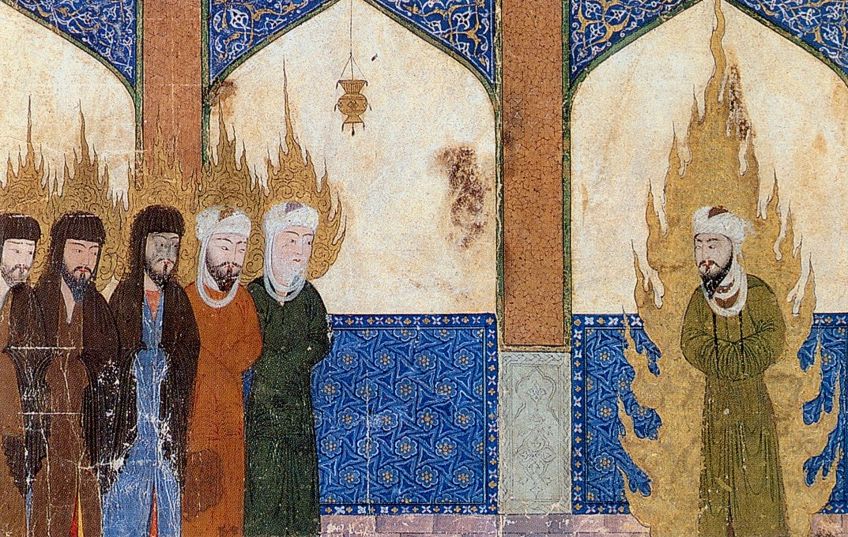
The beginnings of the Islamic religion lie with the prophet Muhammad, who was the founder of the religion, and its seminal religious text, the Qur’an, which was written from the prophet’s recitations after his religious revelations from Allah. The Arabian city, Mecca, is where Mohammad is believed to have been born and is considered a sacred and holy city.
Islamic art can be divided into three chronological time periods for easier understanding and context. This includes the Early period, from around 640 to 900 CE, the Medieval period, from around 900 to 1517 CE, and the final, or Later period, which was from around 1517 to 1924 CE.
Below, we look at each time period and the prevailing dynasties and other ruling structures within each.
Early Period
The Early period in Islam’s socio-political history and art is estimated to be around 640 to 900 CE. This falls just after Mohammad’s death, which was in the year 632 CE. After Mohammad’s death, four Caliphs were appointed as his successors, known as the “Rightly Guided Caliphs” – Caliphs are rulers within what is known as the caliphate, which is a state under Islamic rule.
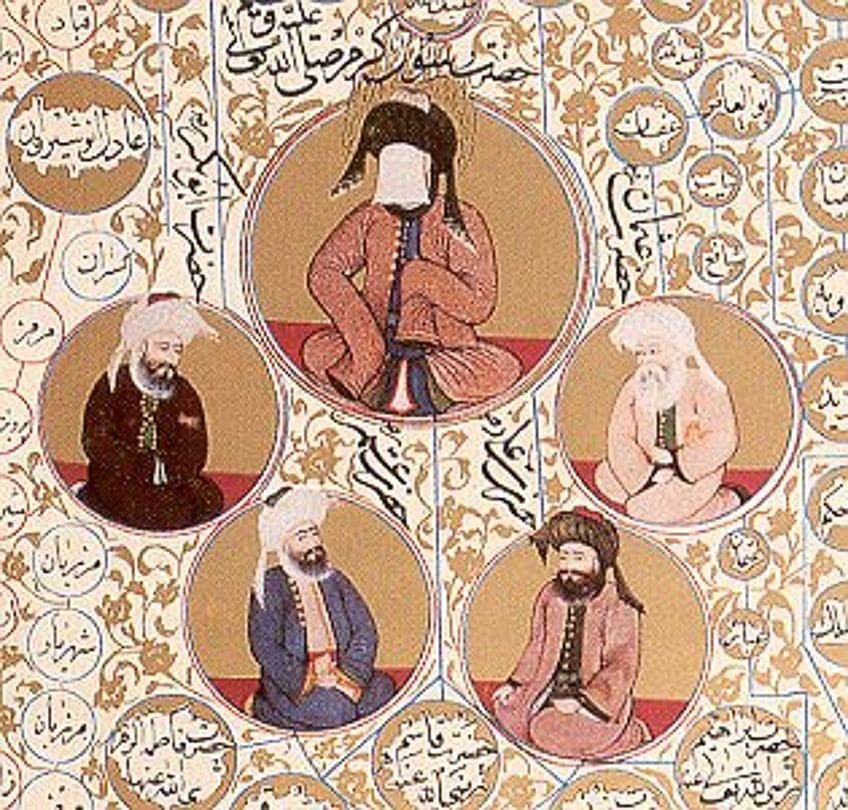
During this period, there was political unrest over the successors, and Uthman ibn Affan and Ali ibn Abi Talib were assassinated by rebels and sects who protested for new Caliphs. This was also when the fifth caliph, Al-Hasan ibn Ali ibn Abi Talib, signed a peace treaty for the caliph Mu’awiya to rule. The Umayyad Dynasty ruled from around 661 to 750 CE, and the second civil war (“Second Fitna”) started after Mu’awiya’s death in the year 780 CE.
The Abbasid Dynasty ruled after the Umayyad Dynasty.
The Abbasid Dynasty was also known as the “Islamic Golden Age” as it became a cultural and intellectual center in various disciplines like science, technology, theology, literature, visual arts, and music, among others. There was also a cross-cultural influence between East Asia (such as China, India, and Iran) and the West (for example, Europe’s Byzantine and Classical Antiquity styles).
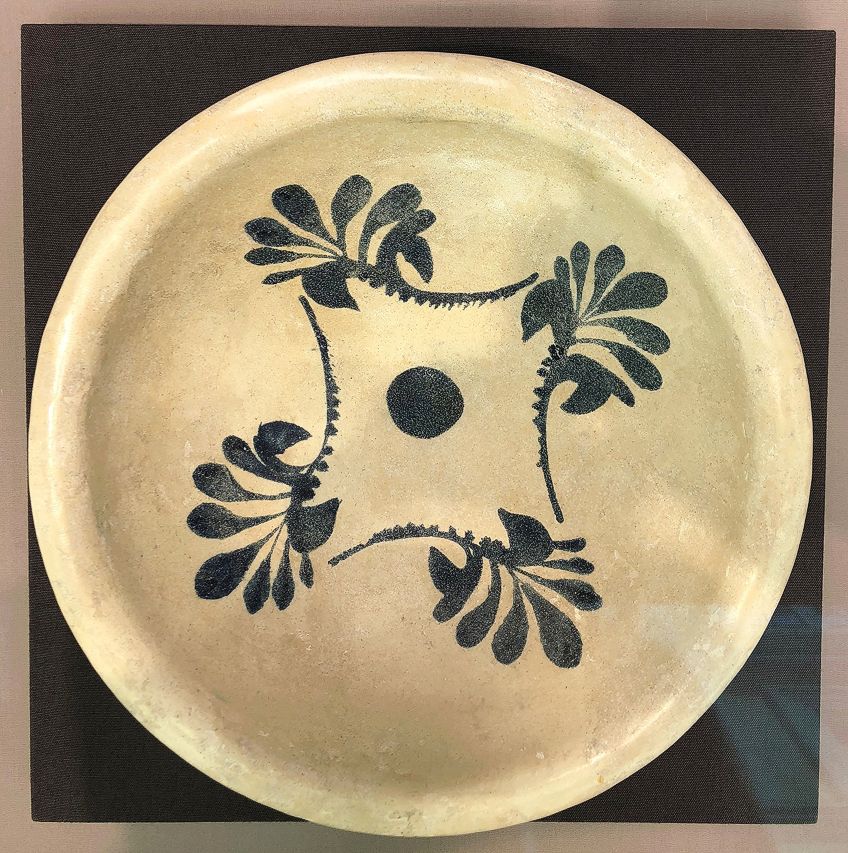
Medieval Period
The Medieval period started around the 900s CE and lasted until about the 1500s CE. As the Abbasid Dynasty ended, there were several new dynasties in North Africa and the East. This started with the Fatimid Dynasty, which began around 909 to 1171 CE. The Fatimids Mohammad’s daughter’s name was Fatima.
During this period, the Fatimids ruled in Egypt and Syria, with Cairo as the main city.
This also became a cultural center with a trade route in the Mediterranean and the Indian oceans. There was also a focus on building architectural structures like Mosques, which were important religious structures. Some prominent examples include the Al-Hakim and Al-Azhar Mosques in Cairo. Other forms of art that emerged from the Fatimid Dynasty included ceramics and pottery, relief sculptures, and carvings made from ivory. There was also a focus on decorative patterns on objects, such as foliage (otherwise referred to as “vegetal” forms) and human shapes. The Fatimid Dynasty produced its art in a luxurious manner.
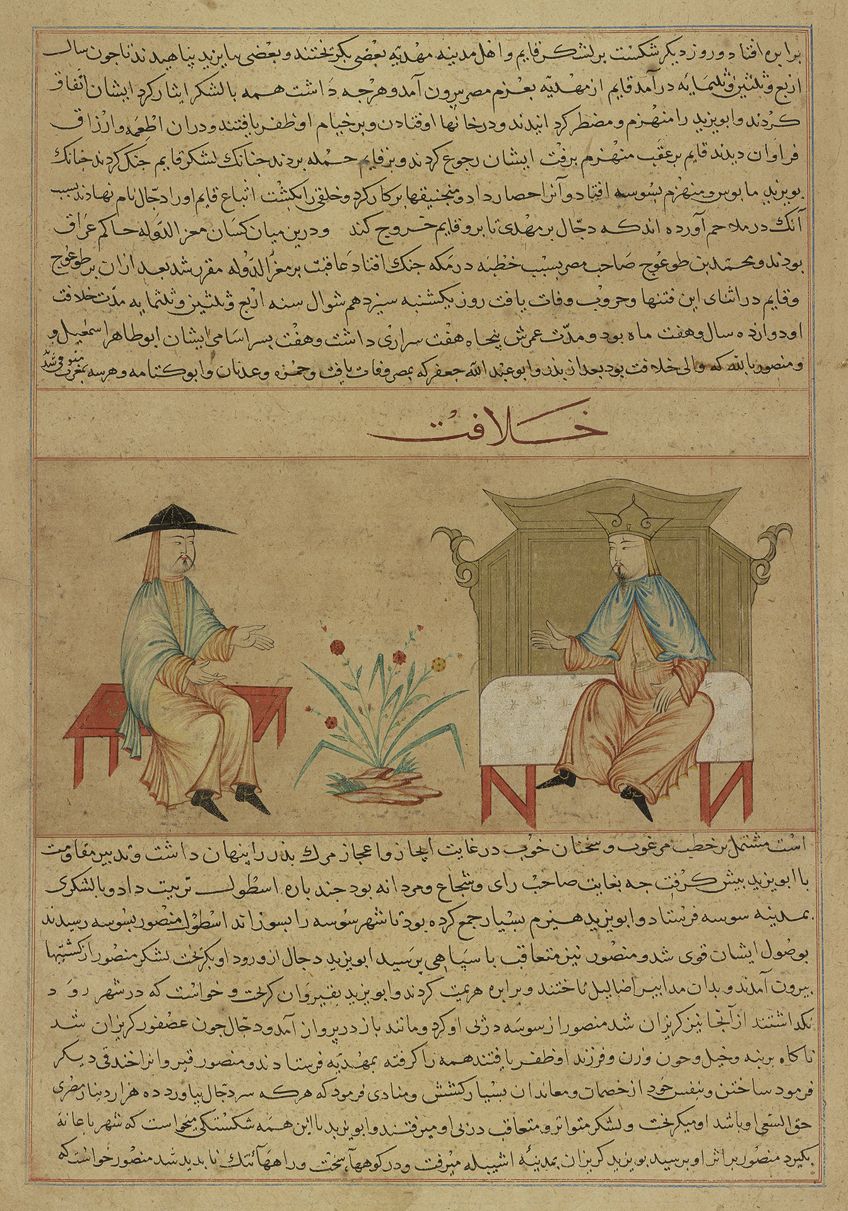
After the Fatimid Dynasty came the Ayyubids, who reigned from 1171 to 1250. Other dynasties included the Ghaznavids, who ruled from 977 to 1186 CE, who were Turkish in origin. The Seljuk Empire, also Turkish, ruled around the years 1038 to 1194 CE.
The Seljuks made significant contributions to the development of culture, art, and politics. They also invested in the development of education through schools, called “madrasas” in Arabic.
Some of the more notable architectural inclusions from this period include the four-iwan layout for congregational mosques, consisting of four doorways on each side of a rectangular building or courtyard. A famous example of such a building is the Masjid-e Jameh, or the Great Mosque of Isfahan, which was built by the Malik Shah. Other artistic developments included ceramics, metalwork, textiles, and more. Some of the techniques in ceramics included fritware.
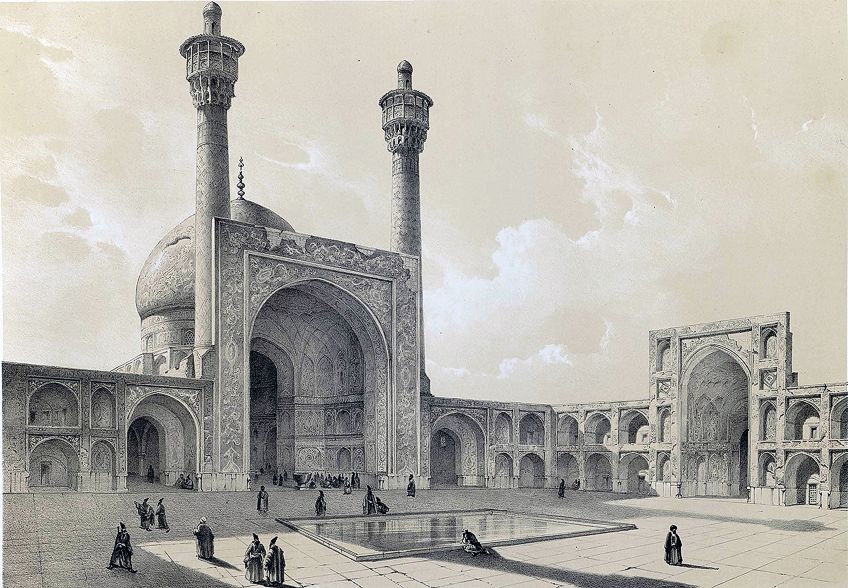
The Mamluks reigned from around 1250 to 1517 CE and were mainly based in Cairo, Egypt, Syria, and other areas in the Middle East. During the Mamluk rule, there was also a surge in Islamic art and architecture, especially with the intention to emphasize the grandiosity of the rulers. Cairo was one of the cultural and artistic centers at the time and showcased the rich and elaborate expressions of Muslim art. Buildings included mosques, schools, and mausoleums, among others.
Other forms of art and craft included metalwork and glasswork.
Ceramics also showed influence from Eastern cultures like the Chinese due to the extensive trade routes, which allowed a wider reach. An example of elaborate craftsmanship is the metal basin, Baptistere de Saint Louis (1290 to 1310).
Later Period
The Ottomans started to overrule the Mamluks, reigning from around 1281 to 1924. The Later period includes several important dynasties and empires, notably the Ottoman Empire; the Timurids, who reigned from around 1369 to 1502; the Safavids, who reigned from around 1502 to 1736; and the Mughals, who reigned from around 1526 to 1858.
The Ottomans took control over the Byzantine Empire’s city, Constantinople, in 1453, which then became Istanbul. With their rule, they introduced impressive architectural structures. Architects also utilized the Byzantine-style dome in building layouts. Other forms of Muslim art included ceramics and decorative arts, especially the Iznik pottery style.

The Iznik style was prominent on tiles and was characterized by flowers and vines in curvilinear shapes. The colors consisted of different hues of blue and turquoise. There was also an extensive production of textiles as well as the extensive use of calligraphy. Some prominent examples include the Topkapı Palace (construction started in 1459) and the Süleymaniye Mosque (1550 to 1558).
When we look at the Timurids and Safavids, both empires included impressive architectural structures.
The Safavids also produced high-quality manuscripts, especially illuminated manuscripts. Islamic painting through this form of art was exceedingly popular, and a significant number of patrons came from the royal court. An example can be seen in the Shahnama, which was a “Book of Kings”.
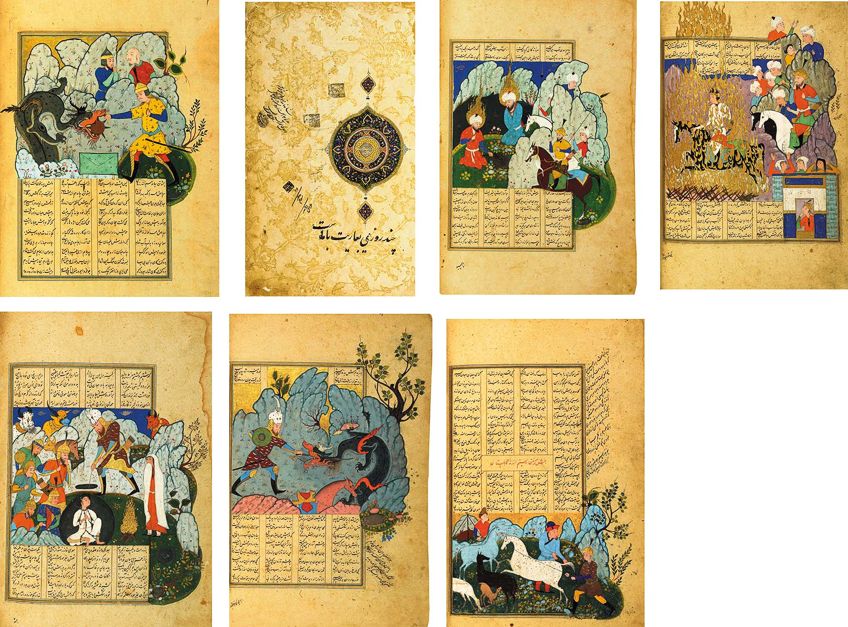
Other forms of art included textiles, especially in the form of Persian carpets, which were utilized in the courts, such as the Ardabil Carpet (1539 to 1540). The entire carpet appears elaborately decorated with forms of foliage, flowers, and other patterns. The Mughal Empire extended its reach into India. Artwork spanned across painting, architecture, illuminated manuscripts, and more. This period also includes the construction of the famous building, the Taj Mahal (1632 to 1653), commissioned to be built by Shah Jahan, who was the fifth Mughal Emperor.
Characteristics of Islamic Art
The art of the Islamic world is very easy to spot because it has very niche characteristics. Whether it be mosaics or vessels from Baghdad, Damascus, or Anatolia, there are several key features of this secular art that are easy to identify. In the section below, we will discuss these themes and decorative elements in more detail.
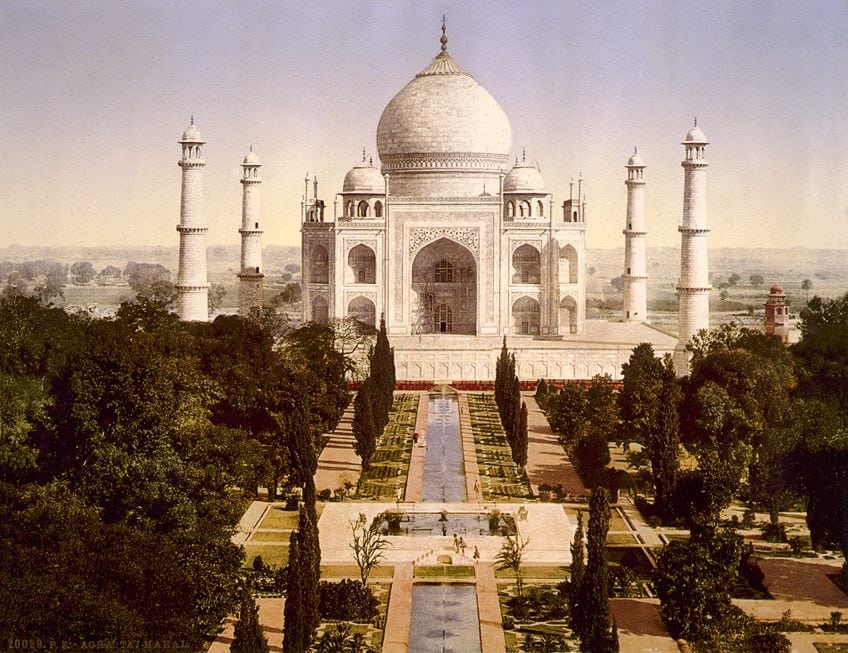
Arabesques
An arabesque is an interwoven geometric motif of leaves and floral designs. Geometric motifs and symbols related to Allah are The geometric Islamic motifs hold significant symbolism related to God and transcending life, symbolizing the infinite.
These geometric patterns are also referred to as Arabesques and are seen far and wide on many buildings.
Some examples can be seen as far as Spain, like the Alhambra (c. 1238 to 1358), which means “The Red One” in Arabic) as well as many more notable buildings. There were also three primary types of buildings built, namely: mosques, madrasas (religiously oriented schools), and mausoleums. All of these buildings would be built and decorated in varying ways.
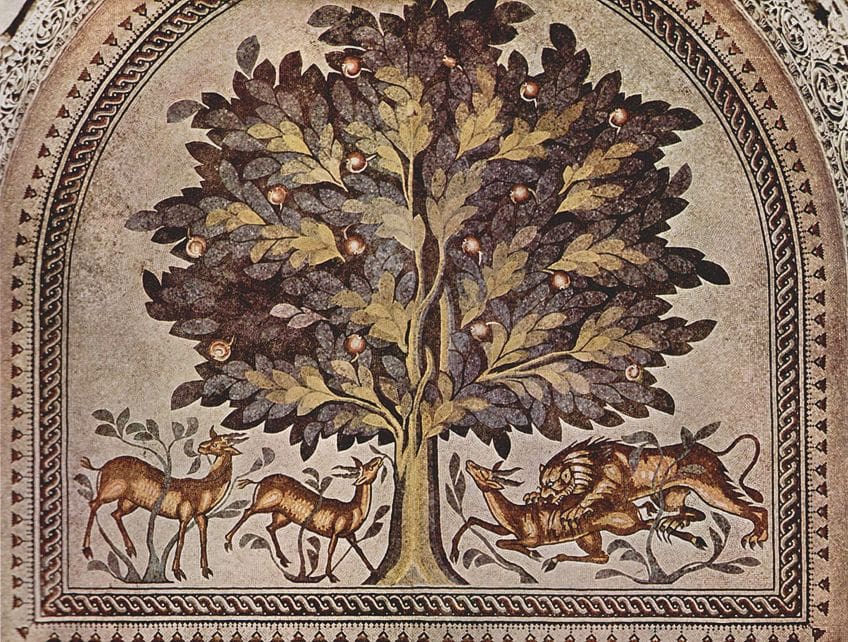
The human figures were considered idolatry and not suitable for depictions in art, which was meant for worshipping purposes. This is referred to as Aniconism and falls under the Islamic law called Sharia Law. In some forms of this art, there would be depictions of holy figures like Mohammad and others as part of telling a story, although the use of more geometric and floral shapes as well as Arabic calligraphy was more prevalent.
While Aniconism was a strong part of Islamic art and architecture, there are examples where this was not applied.
While the older, more religious spaces subscribed to aniconism, such as the shrine in Jerusalem called the Dome of the Rock (c. 7th century CE) and the Al-Aqsa Mosque (completed in 705 CE), other spaces that belonged to sovereigns and their private homes chose to include humans and animal figures. Examples of these include the palace called Khirbat Mafjar (c. 8th century CE), also known as Hishām’s Palace. Other examples include the castle Qasr Amra (also called Qusayr ’Amra), which is in Jordan. It houses various frescoes on the walls depicting a variety of scenes like hunting, women, and some animals. There are also other forms of art that portrayed figural depictions, seen on textiles, ceramics, metalwork, and illuminated manuscripts.
The Use of Script
A discussion of the art of Islam would not be complete without mentioning the Arabic script. As mentioned earlier, calligraphy played a major role in Muslim art and architecture, as well as other forms of Muslim art. Calligraphy was the vehicle through which Muslim artists venerated the written word and messages given by Mohammad in the Qur’an. Where in Christianity there was strong visual imagery of religious icons, Muslim art veered more towards the written word being painted on surfaces. This served two purposes: to decorate the surface as well as convey the important religious messages from the Qur’an.
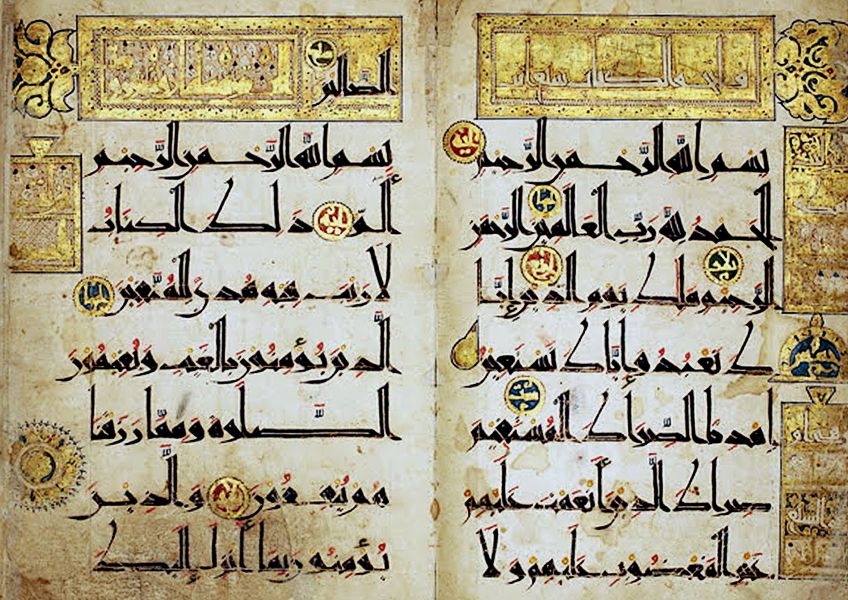
Beauty and Meaning
When we look at Muslim art, we will notice a significant focus on ornamentation and lustrous colors like blues and gold. These colors and designs were also used in common household items like bowls, jewelry, and furniture. Islamic art was about a way of life – objects were highly decorated, not only for the mere sake of art but also for a deeper meaning.
When an object or building had elaborate decorations, the focus was taken off the actual object and suggested a deeper world that transcended the material world.
This notion is especially emphasized by the infinity motifs utilized in varying degrees. These Islamic motifs open up and transform the base materials from which the objects or buildings are made into something more beautiful and meaningful.

Forms of Islamic Art
Below, we briefly discuss some of the other modalities that were vehicles for the wide scope of Islam art. Alongside Arabic calligraphy, art, and architecture, there was a lot of development in Islamic painting, which took on different formats like miniatures and illuminated manuscripts.
There were also Islamic ceramics, pottery, textiles, glasswork, and metalwork.
We will also see the intricate craftsmanship of the Islamic motifs in other forms like leatherwork, jewelry, carvings from semi-precious stones (also referred to as hardstone carvings) and ivory, different pieces of furniture and household items, as well as materials like silk and batik.

Islamic Calligraphy Art
When we take a closer look at Islamic calligraphy art, there were two different calligraphic scripts used, namely, the Kufic script and the Naskhi (or Naskh) script. One of the oldest Arabic scripts, the Kufic script originates from Kufa, a city in Iraq, from the Nabatean culture. The appearance of the Kufic script is horizontal, and the letters have an angular delineation when written. In other words, there is a strong verticality that pronounces the letters.
The script’s letters are often described as geometric and linear with vertical and horizontal aspects.
There are also several different types of this script, such as the floriated Kufic, which has floral-like adornments to the letters; the square Kufic, which was used on bricks or tiles in architectural structures that gave the script a block or square-like appearance; the knotted or plaited Kufic, which was used on architectural structures; and the foliated Kufic, which has half-palmettes and “lobed leaves” on the vertical letters. These are only several examples among many other types of the Kufic script.
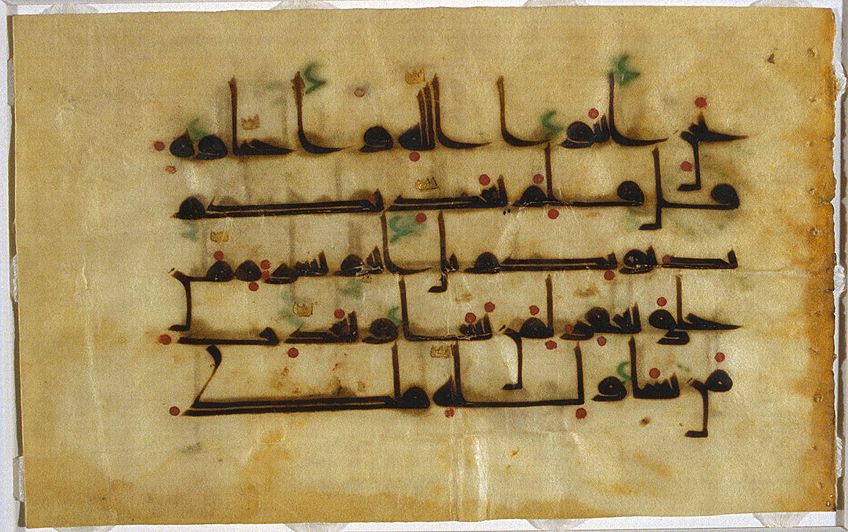
The Naskhi script, on the other hand, started replacing the Kufic script during the 11th century. However, there are scholars that estimate both scripts were utilized centuries before they were given prominence. The Naskhi script is rounder in appearance and is mostly used for scribing rather than decoration. The Naskhi script was mostly used to write administrative documents as well as to transcribe various texts, including the Qur’an. It was easier to read because it did not have the decorative elements we see in the Kufic script.
An easy way to identify this script is through the lack of “hooks” or small “lobes” adorning the ends of letters.
Ibn Muqla is known to have invented the Naskhi script, along with the cursive text called Thuluth and five other scripts called Tawqi’, Ruq’ah, Muhaqqaq, and Reyhan. All six scripts are referred to as the “Six Pens” and vary in style.
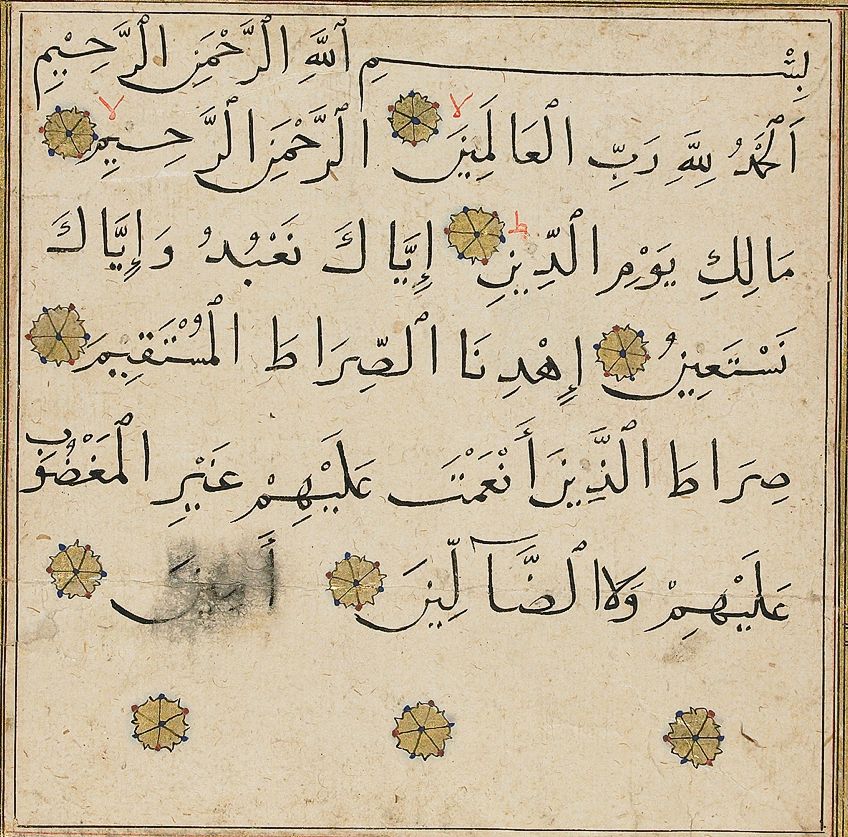
Islamic Architecture
The Islamic architectural style can be seen in the most important structure of Islam, which is the mosque. The mosque in Arabic is called the masjid. It is a religious building for prayer and praise, although it is also used for community purposes like studying, gatherings, or quiet reflection.
The mosque is an important structure in the Islamic faith and so too became an important structure within Islam art.
Mosque architecture is believed to have originated from the first mosque, the Quba Mosque, which was Mohammad’s home. It was in the style of an Arabian house from the 7th century CE, in Medina, which is now Western Saudi Arabia. The Arabian style had a courtyard, rooms, and columns.

There are some overall characteristic features that appear in Mosque architecture, although it is important to understand that Islamic architecture also varied widely due to the vast geographic expansion, regional styles, and the time it occurred in Islamic history. One such feature is the Sahn, which is the large courtyard. This is an important part of the Mosque’s prayer hall because of mandatory prayer attendance by all men in the Islam community, meaning that there needs to be enough space to house everyone.
There are fountains in the courtyards to offer hydration and cleansing prior to prayer.
Islamic Paintings
Islamic paintings included the more famous illuminated manuscripts (book paintings) as well as miniatures. Book paintings were common in various regions like Iraq, the Ottoman Empire, Persia, and Syria. It is believed that this style originated during the 13th century CE when the Mongols infiltrated the Islamic culture, and as a result, the Ilkhanid Dynasty is where the first “Persian books” started. Illustrated books were usually commissioned by the royal courts and aristocrats as they required considerable financial investments to make.
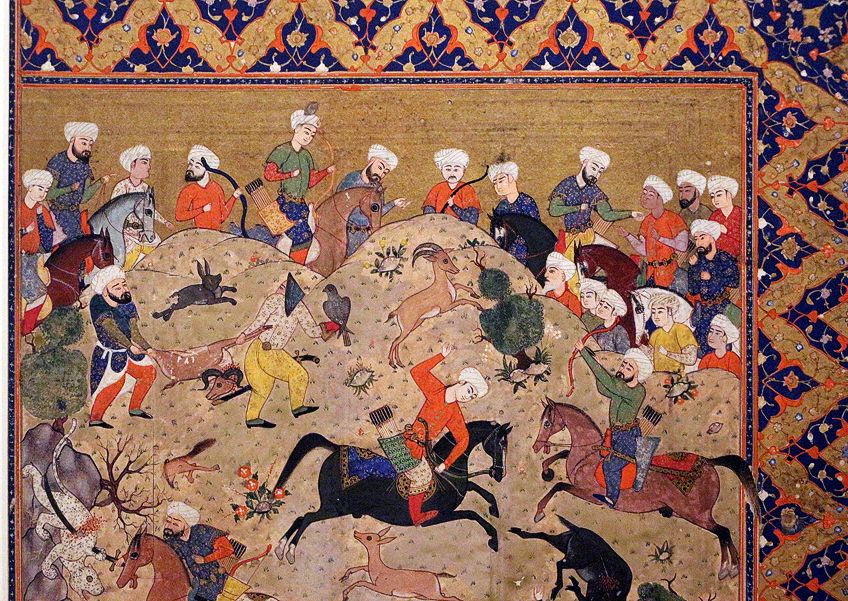
Once the book was completed, the Islamic paintings would be done by various artists. The subject would range from battle scenes to landscapes, and portraits. On occasion, paintings would be done from Islamic drawings or sketches that were already done and then copied over. Various natural pigments were utilized for Islamic paintings, after which they would be gilded and illuminated.
Islamic miniatures also developed alongside illuminated manuscripts, becoming a popular form of Islamic painting.
We will also notice the common depiction of figural forms and influence from the Byzantine and Chinese eras. The illustrated books drew extensively from Persian poetry, such as from the Shahnameh, which is an epic poem by the Persian called Ferdowsi. There were other stories that revolved around historical accounts, autobiographical stories, as well as military stories.

Islamic Ceramics
Islamic ceramic art is important to note here because it became one of the most developed forms of Islam art and culture compared to other cultures. It took on the forms of pottery and tiles, which adorned many of the architectural structures.
The earliest Islamic pottery was unglazed, but one of the earliest glazing techniques was the tin-opacified glazing. Stonepaste was another technique introduced during the 9th century CE in Iraq.
During Ottoman rule, Iznik ceramics were a beautiful art form and a testament to Islamic culture. Muslim artists drew a lot of influence from Chinese ceramics. However, they were not able to use porcelain due to a lack of availability, so Muslim artists created another type of pseudo-porcelain, which became known as fritware. It was made from glassy frit, ground quartz crystal, and potter’s clay.
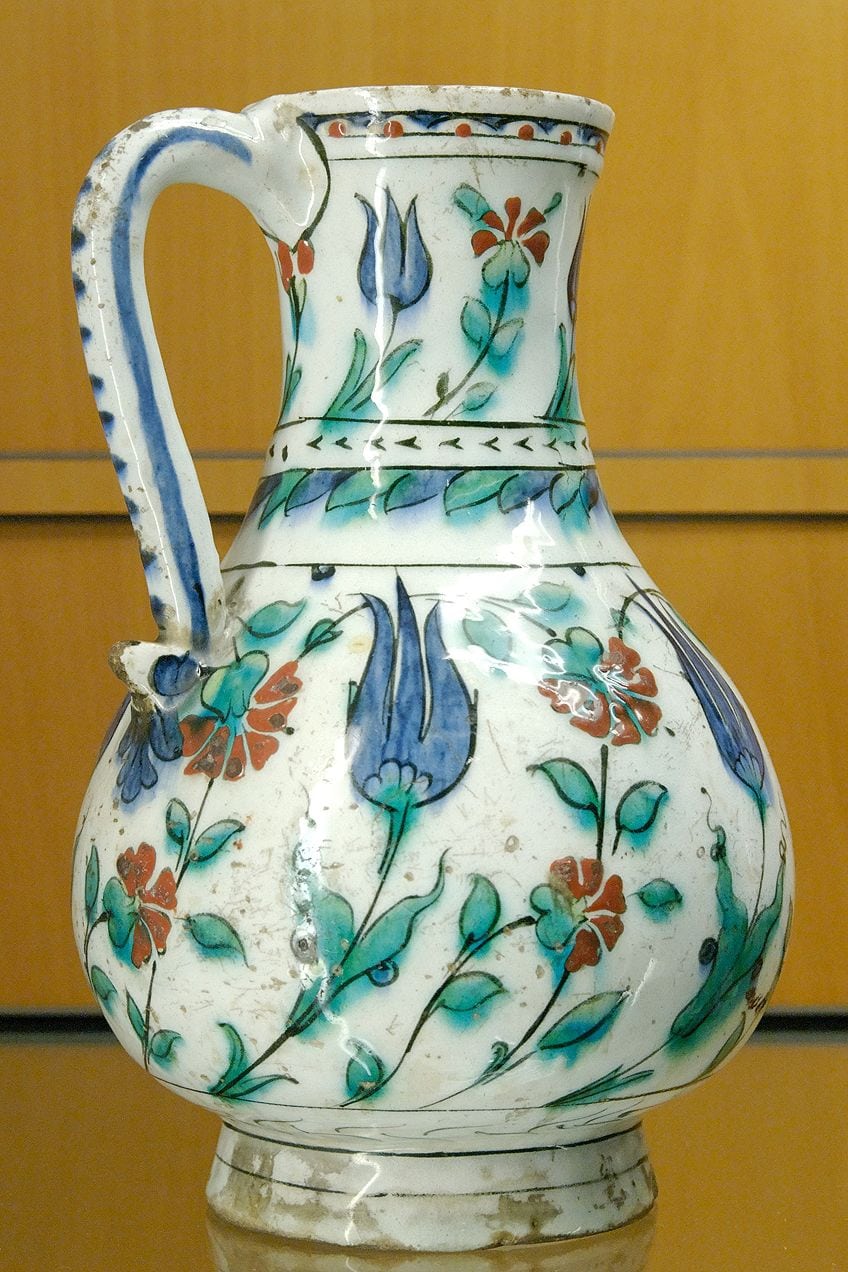
An example includes the Iznik Ewer (c. 16th century CE), which shows the traditional blue and white color scheme widely applied to ceramics with additions of other colors like greens and reds. We also notice decorative black-painted bands around parts of the ewer to create a sense of separation. The ewer has a transparent glaze over all the colors. The shape of this ewer has a rounded, bulbous body, a narrow neck, and an oval-like handle.
Fritware is also compared to Islamic metal jugs from the 15th and 16th centuries CE as well as Chinese jugs from the Ming Period (1368 to 1644).
Islamic Glasswork
Islamic glasswork became one of the most highly regarded forms of glasswork and was even exported to China and Europe. It also retained much of the Roman glass production techniques and developed them in unique new ways. This form of Islam art provided new ways of adorning mosques and buildings and is often described as “sophisticated” and “advanced” compared to other regions that produced glass. Islamic glasswork consisted of either glassblowing or glass cutting.

An example is the Luck of Edenhall (14th century CE), which is a beaker made from enameled glass. It depicts Arabesque shapes in varying colors ranging between blue, red, green, and white. It also has golden touches along the edges and a narrower body that widens at the top.
Another example includes the Mosque Lamp (c. 1329 to 1335), which was made for Amir Qawsun.
It is made from Egyptian enameled glass. This is also one of the hundreds of other mosque lamps that were made from glass. Lamps were important light sources in mosques and were always utilized. They typically have similar shapes, being a more “bulbous” body and a narrower neck.
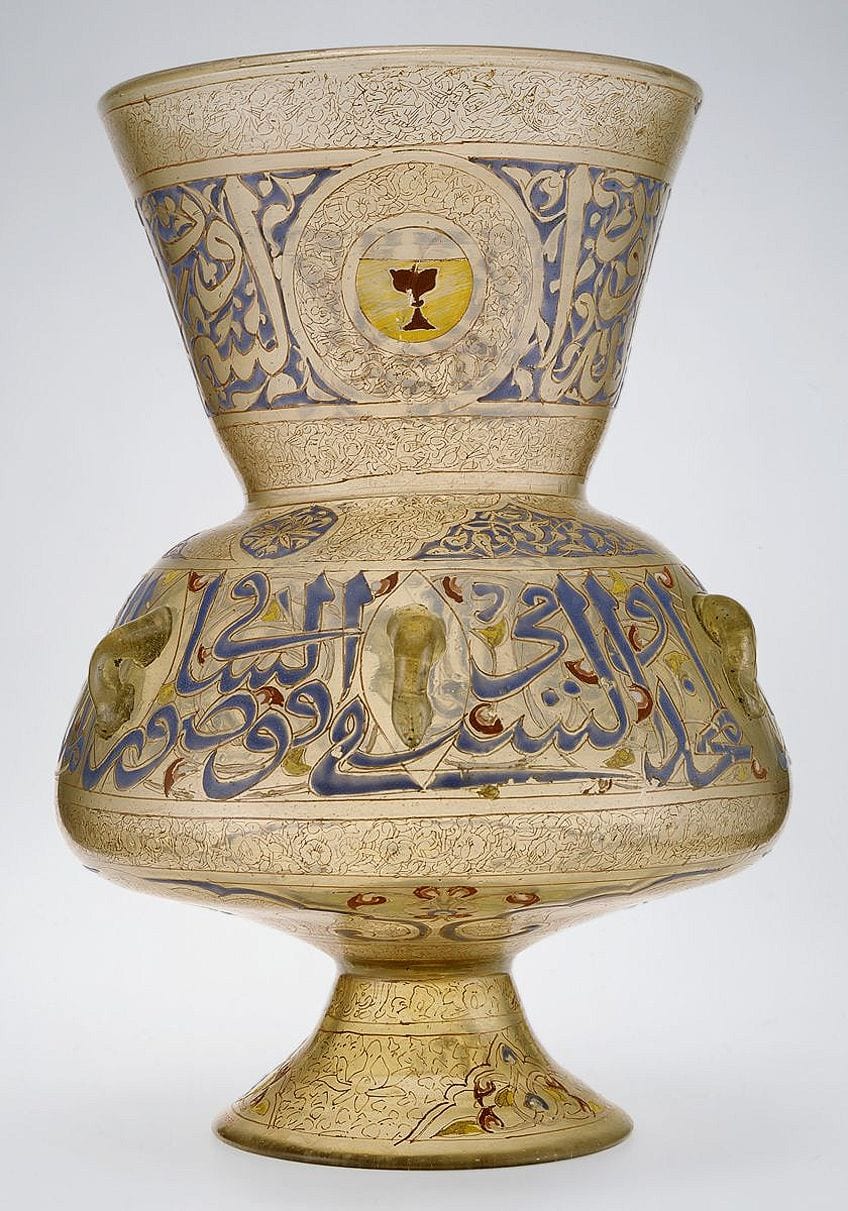
Islamic Metalwork
Islamic metalwork was primarily made from steel, brass, or bronze. The types of items made varied from common household items of more fundamental and functional purposes to other items utilized for luxury purposes, which would have been produced for the court. The range of items included bowls, buckets, ewers, incense burners, braziers, candle holders, lamp stands, plates, and more.
Items would often be made from silver, which indicated a higher status and was influenced by the earlier Roman and Byzantine eras. Common items would be made from brass.
Examples of these silver items include two silver plates made in Constantinople. They are titled Plate with David Anointed by Samuel (629 to 630 CE) and Plate with David Slaying a Lion (629 to 630). These depict biblical scenes and were probably created for display at banquets. These Islamic art pieces are examples of items that were used to showcase higher status and wealth.
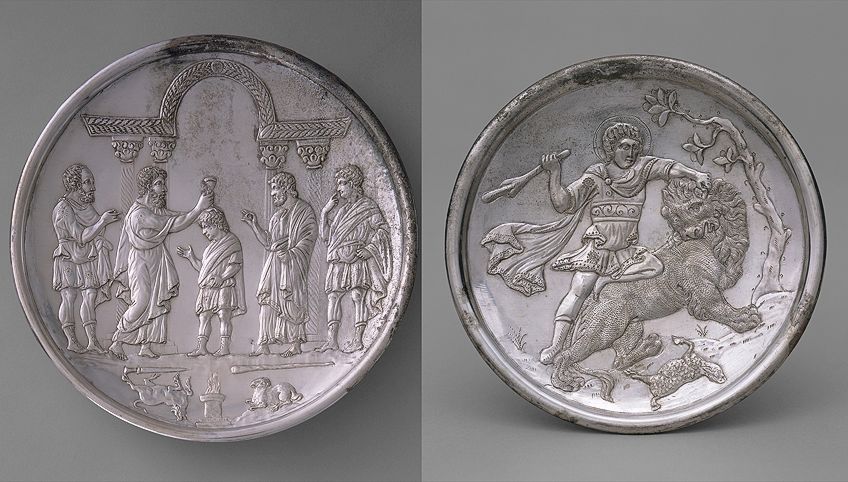
Islamic metalwork items would also be elaborately decorated, and some would have inlays of gold and silver. Such an example is the Baptistère de Saint Louis (1320 to 1340), which is a basin made of hammered brass with inlays of black niello, gold, and silver. The above basin depicts inner and outer friezes of various figural and foliage forms, with notable riders on horses who appear to be in the process of hunting while other figures are standing without accompanying horses.
Other metalwork items would have an array of different subject matter, ranging between foliage, animals, Zodiac signs, and the characteristic calligraphy and Arabesque patterns typical of Islamic art.
Other items, such as the 8th century CE Brazier, depicted figural shapes like women, satyrs, and birds – subject matter of a Dionysiac nature. This Brazier was the property of the wealthy great-grandson of ‘Uthman ibn ‘Afan, the third ruling Caliph.

Other household items include various ewers and beakers, such as the silver Ewer with Dancing Females Within Arcades (6th to 7th century CE). Here, we see various Dionysiac elements, especially the female figure and various animals with festivity-related objects surrounding her. The ewer itself is ornamental in nature and would have served the purpose of a vessel for wine for festivals or religious occasions. This vessel is from the Sasanian period and originated in Iran.
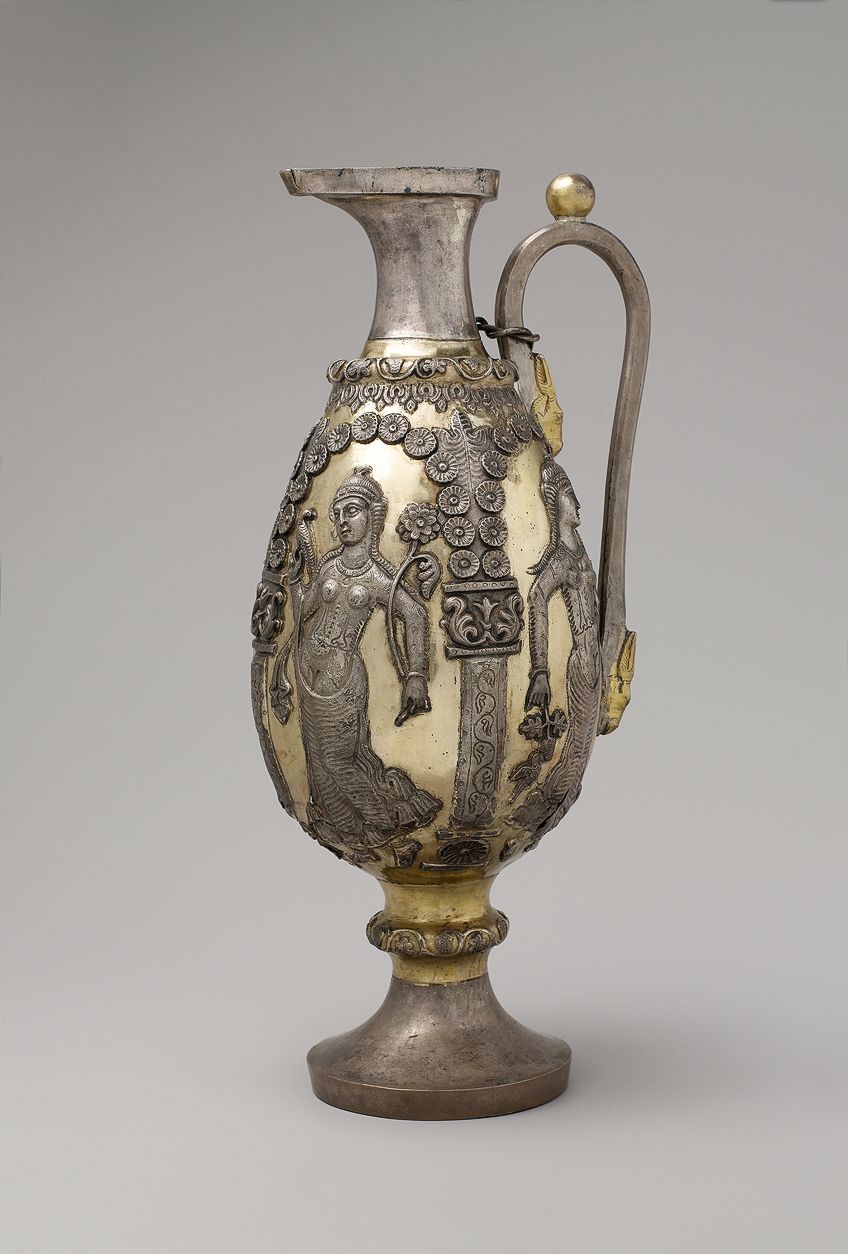
Bucket with a Hunting Scene (6th century CE) is made from brass and depicts animals in the act of hunting. There is an inscription in Greek on this bucket, which would have been used for domestic purposes like bathing. The inscription reads, “Use this in good health, master, for many good years happily”. The bucket was made in the Eastern Mediterranean. Similarly, another functional object, this ewer (cast from bronze in the 9th century CE) depicts delicate ornamental foliate scroll shapes on the bulbous body, reminiscent of the Sasanian period.
This vessel is believed to have been made either in Iran or Iraq.
Islamic Art: From the Past to the Present
Traditional Islamic art started to develop over time with more influence from European styles, which is estimated to have occurred during the 18th century CE. However, Islamic art is not only housed in mosques and illuminated manuscripts, but it is also alive and well in our contemporary culture.
Muslim artists now produce Islamic art with the aim to connect the past to the present and keep the veneration of the Islamic religion and God alive. We see this in many contemporary exhibitions housing Islamic paintings from the Middle East. An example is from the Islamic Art Now: Contemporary Art of the Middle East exhibition at the LACMA art museum in the United States. It has been one of the biggest exhibitions showcasing the works of hundreds of Middle East artists and their perspectives.
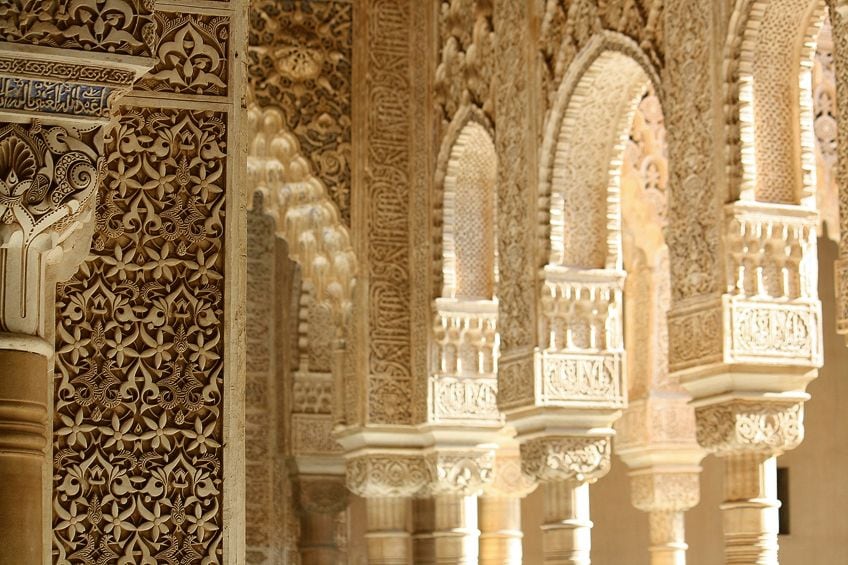
Islamic art has been around for centuries and is as vast in its style and modalities as it is in the regions it developed. We can almost say that it has been all around the world and come around full circle – it always returns to what is most valued, and that is the Islamic way of life, the path to God, and living in honor and accordance to what is right.
Islamic art is a testament to the deeper aspects of the Islamic culture, and Muslim artists have left the world with an assortment of examples, whether it is Islamic drawing, calligraphy, painting, various household objects, or architecture, these all express deeper truths and values.
Frequently Asked Questions
What Is Islamic Art?
Islamic art is the term used to designate the arts from the Islamic world that originated during the 7th century CE, although the term was first used during the 19th century CE. It describes the art, architecture, and various other forms of arts and crafts from the Islamic culture that practiced the Islamic religion. It is also used to designate art forms unrelated to the Islamic religion, but that still come from the Islamic culture.
What Are the Characteristics of Islamic Art?
Some of the main characteristics of Islamic art include the veneration of the holy text called the Qur’an and the messages from the Prophet Mohammad. This is a significant influencing factor in what drove Muslim artists to produce artwork, although it was not the sole contributing factor. Other characteristics include the dominant geometric shapes used as decorations, called Arabesques. Islamic paintings would often not depict figural elements like humans and animals, and calligraphy was also a large part of Islamic art and seen widely as a decorative reminder of the Islamic faith.
When Did Islamic Art Occur?
Islamic art is usually viewed in three chronological divisions. These provide an easier understanding not only of historical accounts but also of how the Islamic World evolved over time, artistically and culturally. The chronological order is as follows: the Early Period, which occurred from around 640 to 900 CE; the Medieval period, which occurred from around 900 to 1517 CE; and the final, or Later period, which occurred from around 1517 to 1924 CE.
Isabella studied at the University of Cape Town in South Africa and graduated with a Bachelor of Arts majoring in English Literature & Language and Psychology. Throughout her undergraduate years, she took Art History as an additional subject and absolutely loved it. Building on from her art history knowledge that began in high school, art has always been a particular area of fascination for her. From learning about artworks previously unknown to her, or sharpening her existing understanding of specific works, the ability to continue learning within this interesting sphere excites her greatly.
Her focal points of interest in art history encompass profiling specific artists and art movements, as it is these areas where she is able to really dig deep into the rich narrative of the art world. Additionally, she particularly enjoys exploring the different artistic styles of the 20th century, as well as the important impact that female artists have had on the development of art history.
Learn more about Isabella Meyer and the Art in Context Team.
Cite this Article
Isabella, Meyer, “Islamic Art – A Deep Dive into the Gilded World of Islamic Art.” Art in Context. September 1, 2021. URL: https://artincontext.org/islamic-art/
Meyer, I. (2021, 1 September). Islamic Art – A Deep Dive into the Gilded World of Islamic Art. Art in Context. https://artincontext.org/islamic-art/
Meyer, Isabella. “Islamic Art – A Deep Dive into the Gilded World of Islamic Art.” Art in Context, September 1, 2021. https://artincontext.org/islamic-art/.





